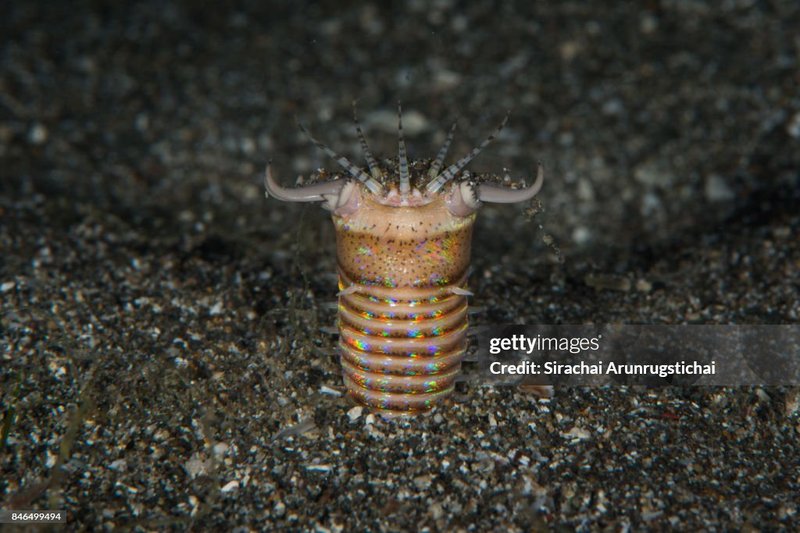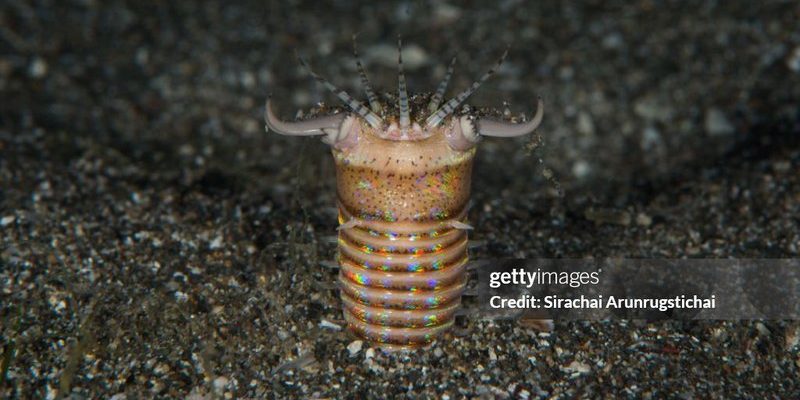
Imagine you’re at a buffet, and you have an incredible sense of smell that helps you find the best dishes. Bobbit worms do something similar but even better! These creatures dwell in sandy ocean floors, waiting for unsuspecting prey to swim by. They have evolved unique ways to detect their next meal, and understanding how they do this is as intriguing as the worm itself. So grab a cup of coffee, and let’s explore the sensory world of Bobbit worms together!
Understanding Bobbit Worms
Bobbit worms, scientifically known as *Eunice aphroditois*, can grow up to ten feet long, making them one of the longest worms in the ocean. They have a segmented body with a colorful array of bristles and can be quite intimidating with their sharp jaws. But what’s most remarkable about these creatures isn’t just their size or looks; it’s their hunting abilities.
These worms are ambush predators. They spend most of their time buried in the sand, with only their feathery tentacles poking out. This gives them a perfect hiding spot from which to launch a surprise attack on fish and crustaceans that swim too close. But how do they know when a meal is nearby? That’s where their chemical sensing abilities come into play.
How Do Bobbit Worms Sense Their Environment?
Bobbit worms possess a remarkable set of sensory capabilities. They have specialized structures on their body, called chemoreceptors, that help them detect chemicals in the water. These chemoreceptors can pick up on various substances, such as the scent of potential prey. You can think of them like tiny, super-sensitive noses that help the worms sniff out their next meal.
When prey swims by, the Bobbit worm can sense the chemical signals released into the water. This allows the worm to know immediately when a snack is within striking distance. Imagine being at that buffet again—if someone spills a bit of sauce, you can smell it and instantly know to head in that direction. For the Bobbit worm, that’s how it finds food.
Do Bobbit Worms Use Smell to Hunt?
Yes, Bobbit worms do use smell, or more accurately, chemical signals, to hunt! When they sense the chemicals released by fish or crustaceans, they can react quickly to capture their prey. Here’s how it generally works:
1. Chemical Detection: When a potential meal is in the vicinity, it releases specific chemicals.
2. Receptor Activation: Bobbit worms’ chemoreceptors detect these chemicals in the water.
3. Quick Response: Once the worm recognizes that food is nearby, it can strike with incredible speed.
It’s important to note that this sense is primarily linked to a chemical reaction rather than the traditional sense of smell we associate with animals. It’s more like tuning into a radio station that broadcasts information about food!
Comparing Bobbit Worms to Other Predators
Bobbit worms aren’t the only marine creatures that use chemical sensing to hunt. For instance, sharks have an incredible sense of smell that allows them to detect tiny amounts of blood in the water from great distances. Octopuses also use chemical cues to find prey, employing their keen senses to hunt in the dark depths of the sea.
What makes Bobbit worms unique is the combination of their ambush tactics and highly developed chemoreception. While many predators actively search for prey, Bobbit worms lay in wait, relying on the chemical signatures in the water to signal when it’s time to strike.
The Importance of Chemical Sensing in the Ocean
Chemical sensing is vital for survival in the ocean. It helps creatures navigate, find food, and even avoid predators. For Bobbit worms, this talent for detecting chemicals helps them maintain their position in the food chain.
In a world where food can be scarce, the ability to sense chemicals effectively can mean the difference between life and death. Bobbit worms, along with other species, rely on their enhanced senses to thrive in the vast, dynamic underwater ecosystem.
Can Bobbit Worms Detect Changes in Their Environment?
Bobbit worms can indeed detect changes in their environment using their chemical sensing abilities. For instance, if a harmful substance is introduced to the water, these worms may sense it and react accordingly. This ability to pick up on chemical changes is crucial for their survival, as it allows them to avoid potential dangers.
Moreover, shifts in water temperature and salinity can affect the distribution of chemicals in the water. While Bobbit worms primarily focus on detecting prey, staying aware of their environment helps them adapt. In a way, it’s like being able to read the mood of the ocean—if something seems off, they’ll know to be cautious.
So, can Bobbit worms smell or sense prey chemically? Absolutely! These fascinating creatures utilize their specialized chemoreceptors to detect chemicals in their environment, helping them locate prey with remarkable accuracy. The next time you’re near the ocean or reading about marine life, remember the hidden wonders beneath the waves, like the talented Bobbit worm.
By understanding how these worms sense their prey, we gain insight not only into their hunting tactics but also into the complex web of life that exists in our oceans. It’s a reminder that even the most unusual creatures have unique adaptations that help them thrive in their habitats. Who knew a worm could be so interesting?

